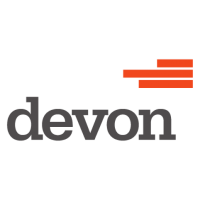
Avance Gas Holding Ltd
OSE:AGAS

Earnings Call Analysis
 Q4-2023 Analysis
Avance Gas Holding Ltd
Q4-2023 Analysis
Avance Gas Holding Ltd
In a testament to strategic asset management and opportunistic sales, the company surpassed their guidance, showcasing a time charter equivalent rate (TCE) of $76,200 per day against a forecast of $70,000 to $75,000. This led to a substantial quarterly profit of $61.5 million, culminating in a successful year with a $164 million profit. The sale of Iris Glory and Venus Glory, older vessels offloaded for significant gains, exemplifies the company's agility in capitalizing on market conditions. Importantly, the company didn't just dispose of assets; they also managed to secure profitable spot voyages before final transactions.
The company's robust cash position and proceeds from asset sales have enabled an increase in dividends to $0.65 per share, translating to a payout that exceeds 100% of earnings. Investors received a yield on a quarterly basis of around 18% to 22%. The earnings reflect a compounded benefit of efficient fleet management and capital discipline. Additionally, proceeds are smartly earmarked for equity in new medium-sized gas carriers, with a promise to return surplus cash to shareholders in a tax-efficient manner.
Despite an initial slump due to a cold snap in the US, affecting both production and arbitrage opportunities, the market has shown resilience with rates rebounding. The future forecast suggests a TCE average of $47,000 per day for the latter three quarters, well above the company's cash breakeven level of $22,500, indicating healthy margins ahead.
Hidden.
Hidden.
Hidden.
Hidden.
Hidden.
Hidden.


























 You don't have any saved screeners yet
You don't have any saved screeners yet

Good day and thank you for standing by. Welcome to the Avance Gas Holding Ltd. Fourth Quarter 2023 Earnings Conference Call. [Operator Instructions] Please be advised that today's conference is being recorded.I'd now like to hand the conference over to your first speaker today, Oystein Kalleklev, CEO. Please go ahead.
Thank you and welcome everybody to the full year result presentation for Avance Gas. We very much appreciate you sharing your Valentine's Day with myself and Randi. And I hope we will get you in the right mood for the rest of the night. So before we begin, I just want to remind you on the disclaimer Randi. So this is not exact science. So we will give some forward-looking statements. We use a couple of non-GAAP measures like time charter equivalent earnings. And of course we cannot cover all the ground in this short presentation, so we also recommend you read our quarterly report, which we also published this morning. So with that, I think we are ready to go.So let's review the highlights. Numbers came in slightly ahead of our guidance provided in November. Time charter equivalent rate or earnings per ship, this is the average sailing rate, was $76,200 per day slightly ahead of our guidance of $70,000 to $75,000 per day. So please note that we are guiding on discharge-to-discharge numbers. That resulted in a very nice profit for the quarter, $61.5 million in total, translating into our earnings per share of $0.80, which is actually the second best quarterly results we have delivered in the history of the company only beaten by Q3 in 2015. Altogether that also resulted in a very strong numbers for the full year.Full year profit of $164 million translating into our earnings per share $2.14. Again, the second best year only beaten by 2015, and actually, if we wanted we could have beaten the 2015 numbers as we sold the ship Iris Glory, which came off our 3-year time charter with IOC in the end of November. We could have handed her to new owners at that time. But as we sent out in the press release, we managed to squeeze in one spot voyage prior to delivering this ship to new owners where we made a profit of $3 million on that spot voyage, which is booked in the Q1 of December and Q1 numbers and we booked the profits on the sale in January of $21 million versus the sales price of $60 million, also provided a cash release of $25 million.We have also sold the last remaining older vintage ship Venus Glory. Sales price of $66 million, which will then generate a profit of $27 million. Same strategy we have applied to Venus Glory. She came off our 2-year time charter with IOC in December. We have been able to squeeze in our spot voyage on that ship also prior to delivering the ship to new owners with a net result from that spot voyage of $5 million. So that $5 million come on top of the $66 million and the profit of $27 million and are reflected in the Q1 numbers. So with those ships sold, we have sold all the 2008/2009 vintage ships.And we also made a more opportunistically sale of two newbuildings for delivery this year Avance Castor and Avance Pollux, they are set for delivery in March and May respectively. We have sold them and blocked to the same buyer and it will be above $72 million with our cash release of $120 million. So all of this will take place in Q1 and Q2 and we will cover some more ground on this later in the presentation. So hence, given the strong numbers, a good cash position and a lot of cash coming from these sales, which Randi will cover later in the presentation, we are happy to increase the dividend.We paid $0.50 per share the last four quarters. We are increasing it $0.65 reflecting also the stronger earnings. And this takes the dividend for the year to $2.15. So we are paying out approximately 101% of the earnings for this year, which should give a quarterly dividend yield of 22%, but if you are applying the last four quarters, we have a running yield of about 18%. We put in these numbers last night when our stock closed at NOK 126, and I'm happy to see that the investors are liking what we are presenting today. And last time I checked, the stock was up at about 9% today. So the yield is slightly lower, but still at very elevated and attractive levels we think.Given the substantial cash, we will release from the asset sales. As we have communicated in the past, we do expect to utilize the proceeds from the sale of Iris and Venus Glory as equity for the four medium-sized gas carriers, which we contracted last year. However, in relation to Avance Castor and Pollux, we raised $65 million in equity in April 2021 for these ships. So we raised $65 million and we are now also selling them at a profit of $72 million, bringing that in total to $137 million. So we are planning, as we also communicated when we sold the ships that we will seek authorization from the annual general meeting scheduled for early May, to pay back some of this capital, so we can distribute some of this surplus cash to our shareholders in a tax efficient way.So it's being taxed as return of capital rather than return on capital. So once we come back with our Q1 numbers in May, we have done our AGM and we will come back to the dividend situation in relation to these asset sales. In terms of the market, we had a fantastic market last year, was the best market probably since 2015, reflecting also the strong results. This year, we ended up with a slump, not that dissimilar from the slump we had in 2023 at the beginning of the year, but it's been a bigger fall. And it's been driven by the Arctic cold snap in U.S., which reduced oil production from about 13 million barrels per day to 12 million barrels per day and resulted in gas prices in U.S., both natural gas and propane really shooting up, making arbitrage less attractive, and I will cover more of this in the market section later in the presentation.However, rates have rebounded from the lows and are trending upwards, and if we look at the future of the price curve, we are at around $47,000 per day for Q2, Q3, and Q4 on average for our non-scrubber ship, which is still a pretty attractive level compared to our cash breakeven, which Randi will present later of around $22,500 per day.Prior to the market slumping, we are focused on fixing long voyages at the end of the year, with the congestion in Panama, which has been an issue last year, not so much these days, we have been able to book very long voyages. So if you go in China via Cape, Suez is not really an alternative these days, which I will explain later, you're basically booking a quarter, 90 days. So we had good bookings coming into Q1, and we are booked 70% of the quarter already, at an average rate of $70,000 per day.Of course, we have 30% of days still remaining to be booked. These will naturally be at lower levels given where the freight market is today, but if you apply the current rates, we should be, once fully booked, in line with then Q1 last year, where we delivered a TCE of $58,000 per day, and as you all know, last year ended up quite well for us.So just let us review the bookings in more detail. Q4, as I mentioned, very strong numbers, slightly above $100,000 on average on the spot ships. We had above 70% exposure to the spot market there during the quarter. As I mentioned, we focused mostly on long voyages, Asia, Cape, U.S., back Cape, where you are locking in very good rates for longer duration and that is also reflected in the bookings we have for Q1.Our TC ship ended up at around $49,000, as we have explained in the past, and as you will also see from the appendix slide, we have had some coverage, where we have utilized freight derivatives, or FFAs to cover part of our fleet. In Q3 and Q4 last year, we had 2 ships covered on FFAs. In Q4, it was one ship -- scrubber ship at $47,500 and one ship on VLSFO has I believe, $63,000 per day. So of course, when the spot rates are much higher, that is dragging down our net result. So after taking the FFA losses, or the losses in relation to the hedges, we ended up at $76,200. For Q1, when the market slumped, we actually will generate slight profit on the freight hedges. We have covered one-half ship for Q1, at an average rate of $63,300. So that is contributing when spot rates are down.As mentioned, $80,000 on the 50% of spot rates covered and $47,000 on the TC rates, and then we have 30% still to be booked. And I just want to highlight one thing, these numbers are on discharge-to-discharge, which is the round trip economics and which is the preferred way of calculating economics for voyage. In our accounts, the auditors, for some reason, have decided that you would have to book your earnings on a load to discharge, and these are creating some timing effects in our numbers.This was more on an issue in our Q3. So when the market took off in Q3, we delivered, I would say, just average numbers because of this time lag. So during Q3 and Q4, when the market was firing up, we had this IFRS, or accounting effects negative by $16.3 million, and once the market now is normalizing and coming down, we expect to reverse most of these effects. So that will add further kind of earnings to the Q1 numbers on top of the bookings we have done.Let's look at the fleet. It's been an evolving story in the last 2 years or so, we have been active renewing our fleet. We sold off all the five older ships with Iris Glory delivered to new owners in January, Venus Glory set for delivery to new owners end of February. We are left with 2015 eco class ship. These are more efficient in terms of fuel consumption, and six of them have installed exhaust gas cleaning system or scrubber.Chinook is on a variable higher TC until the summer of this year compared what we announced last autumn, we fixed her on our 21-month time charter until Q3, 2025, where earnings is about $45,000 per day and she will be on that time charter until she will be doing her 10-year special survey Q3, 2025. So the six scrubber ships are all in the spot market, where we do get the benefit of having a scrubber on the ships. Dual fuel class ship, we have Polaris, which is on a variable time charter for the remainder of February. The other three dual fuel class ships are in the spot market where we get the benefit of having ships that can take bigger parcel sizes. So rather than taking about 46,000 tonnes, these can lift 51,000 tonnes. So where we can get paid for our ability to transport more products.And they are also more eco, consume less fuel than older type of ships. And then they can also burn LPG with a dual-fuel engine, which can give considerable cost savings in terms of price arbitrage versus very low sulfur oil. And then, as mentioned, we have sold the two newbuildings for delivery this year. It wasn't really the plan to sell these ships, however, we got a very good price. We contracted the ships at $78 million. We have done upgrades to ammonia spec on the ships for about $2 million. So around $80 million, and then we are selling them for $120 million. So it just became too tempting to take some money off the table which -- and then having the ability to return this capital to our shareholders. We also bought some new ships during the summer and autumn last year.The MGC, so medium-sized gas carrier or medium-sized ammonia carriers. So these ships have a very high filling ratio, 98% of ammonia, which means that they are very ideal for this trade, where we also do think that, when this trade starts up on the ammonia side, we probably we are -- in the beginning at least, we do think that there will be a lot of interest for parcel size of around 40,000 cubic, rather than the big size. So these ships gives us a lot of optionality. They are dual fuel, very efficient ships, come for delivery end of '25 into '26. And we already see people contracting ships, for delivery in '27 at significantly higher prices than the $61.5 million we paid for these ships last year. So that's a fleet renewal for dummies.We are utilizing the net proceeds from the sale of Venus and Iris Glory to utilize as equity for the four new MGCs. And the cash release from the sale of Iris and Venus Glory is about $65 million. And then we have been able to top that off with about $8 million in spot earnings prior to delivery of the ships to new owners.Let's look at the dividend. We have been ramping up the dividend the last 2 years or so. We were at $0.05, we increased it to $0.20 last four quarters and $0.50 and now we increased it to $0.65 reflecting our earnings. We paid out slightly more than earnings in Q3 '23, reflecting the fact that these timing effects in terms of load to discharge is impacting IFRS numbers. So while basically the time charter equivalent earnings on these ships were quite similar in Q1, Q2, Q3 we had an accounting effect in Q3 when the market took off. So we are paying out slightly below earnings for Q4, but on average for the year, we are paying out 101% of the earnings.In terms of the dividend decision criteria, earnings are strong and market outlook of course, given the slump in rates, it's been a poorer sentiment which I will cover later, but the future freight rates, are at very conductive levels for Q2, Q3 and Q4. Backlog we have taken more export exposure this year. We have sold off some of, as I mentioned, two ships which were on time charters. We have not replaced that time charter coverage. We are structurally bull on the market '24 and '25. This year, we will have delivery of ships half the numbers of last year and even fewer in '25. So we have a constructive view on the market and want to capture that upside by having ships in the spot market.Liquidity $132 million year end. But this cash position will increase by a lot, Randi will cover covenants we are meeting with flying colors and as Randi will also inform, we have also done some refinancing and pushed out maturities. So no maturities prior to '28. We have some CapEx liabilities in relation to the MGCs, but we do feel that equity is covered now, by the sale of Iris and Venus Glory. And we already have a lot of banks willing to finance these ships. But for now, we are waiting a bit because the ships are not due for delivery in '25, '26. And we don't want to pay, too much commitment fees in order to have that financing in place, given our strong financial position.So with that, I think I hand it over to you, Randi, for our financial review and I come back on the market section.
Thank you, Oystein. Let's go to Slide 7 and have a look at the key financial figures for 2023. So our reported fail in rate, or TCE per day for the quarter was $71,900 compared to $46,700 a day from previous quarter. As Oystein already commented, note that the reported figures are low to discharge in accordance with IFRS 15 accounting standards, while our commercial performance based on our round trip voyage discharge-to-discharge was higher at $76,200 and in line with our guidance between $70,000 to $75,000 a day.For the full year, we reported a TCE of $57,200 up from $38,200 in '22, equaling an increase of 50%. We continue to hold a relatively low operating expenditure, or OpEx, which came in at $8,100 for the quarter and $8,200 for the year. And we also have a very low administrative expense of $1,200 for the quarter and $1,400 per ship day for the year. And thus the increase in TCE earnings during the year is maintained in our reported EBITDA, or earnings before interest, tax and depreciation and amortization, which is up $91 million or 84% from 2022.Net profit came in at $61.5 million for the quarter, up from $30 million in previous quarter. For the full year, net profit was $164 million or earnings per share of $2.14 basic compared to $89 million or EPS of $1.16 in '22. And this is actually the second highest result ever, which is explained by a solid spot freight market driven by continued strong exports from the U.S. supported by a very favorable price arbitrage between the U.S. and Far East combined with inefficiencies in the Panama Canal, Oystein will cover this more in detail later on.Moving to Slide 8, you can see that we have a clean balance sheet. 80% of our balance sheet consisted of 14 VLGCs on water at year end, which currently is 13 as we sold Iris Glory in mid-January, and is soon to be 12 following the upcoming sale of VLGC Iris Glory, the 2008 build, which will be handed over to the new owner in a few weeks' time.Additionally, we have a few newbuildings under construction, the VLGCs Avance Castor and Pollux, which will also be derecognized from our balance sheet and out of our books within May this year in connection with the sale. Also, we have the four MGCs where we have capitalized 15% of the shipbuilding contract amounting to $37 million at year end. Looking at the credit side, we have a book to net leverage ratio of 39%, and we have maintained our solid shareholder equity of 52%. Return on the average shareholder book equity of $604 million was 27% during the year '23.Moving to Slide 9, we have a very solid cash position of $132 million as of December 31, '23, which was down $14 million from previous quarter and is explained by capital expenditure of $27 million in relation to our newbuildings, of which $18 million relates to the MGCs and approximately 8 million relates to Avance Pollux for delivery and following sale in May. We have also paid $11 million in schedule repayment of debt and $38 million in dividend, which is offset by net $62 million in cash generated from operations in the fourth quarter.However, the cash balance will grow boosted by cash generated from the four vessel sales as illustrated on Slide 10. 15 of January, we successfully completed the sale of Iris Glory, one of the two last vintage ships 2008 built. The vessel completed her 2-year time charter in November and after completion of the time charter, Iris Glory also carried out a single spot voyage at a net charter equivalent result of $3.1 million prior to delivery of the vessel to the new owner. The sale price was $60 million less broker commission and we'll record a book gain-on-sale of approximately $21 million and net cash proceeds following repayment of the lead financing of $25 million in cash release in total.And also in January, we announced the sale of Venus Glory, the last vintage ship. The vessel is currently about to finalize her last spot voyage at a net TCE result of $5.4 million. Delivery of the ship to the new owner will take place in a few weeks' time, and the sale price was $66 million less broker commission, and thereby we expect to record a book gain of $27 million and net cash proceeds of $40 million after repayment of debt.Further, in December, the company announced the agreement to sell the two remaining dual fuel newbuildings scheduled for delivery in March and May this year. The buyer has agreed to pay $240 million en bloc for the two newbuildings and they were intended to be named Avance Castor and Avance Pollux, expected to be delivered as I said in March and May and sold ex-yard.The newbuildings were contracted in April 2021 at the price of $78 million each. They have since been upgraded with a CapEx of about $3 million each, for the ships to be able to load ammonia cargoes as well as being ready to run on ammonia fuel, yes. So we expect to book a profit of approximately $72 million from the sales, of which $36 million will be booked in the first quarter and $36 million in the second quarter.The cash release from the sale is expected to be in total $120 million, $60 million per vessel, as we've already paid $24 million or $48 million in total in milestone payments to the yard. So to summarize, we will record approximately $120 million in gain on sale from the four vessel sales, of which $84 million will be recorded in the first quarter and the remaining $36 million in the second quarter.Total cash release from the sales is $185 million, of which $25 million has been released already and additionally $100 million to be released within March. The remaining $60 million will be released in May. In addition to the vessel sales, we will also increase the cash balance in connection with the recent refinancing that we've done shown on Slide 11.In January, we'll sign the $43 million bank facility to refinance Pampero, as previously announced. The facility will improve the margin from 325 basis points in the current sale leaseback agreement, which was signed in December 2020, and the new $43 million facility will bear a margin of 190 bps, thus lower our interest expense.The sale leaseback has been terminated, and we will be fully repaid in early March, where we will simultaneously draw on the $43 million facility resulting in a cash release of $5 million. In February or actually just last week, the company signed them and drew on the amended $135 million sale leaseback arrangement and as previously announced, the company agreed with the leasing [Technical Difficulty] from the two VLGC newbuildings for delivery in March and May '24 to the sister ships Avance Polaris and Avance Capella, both 2022 built.The refinancing will extend maturity from 2022 to 2034 and resulted in a net cash release of $40 million last week. All-in-all, we have a total cash release of $230 million where $45 million comes from refinancing and $185 million comes from sales, which brings us up to a pro forma cash balance of $362 million. And with the refinancing, we don't have any maturity before 2028 shown on Slide 12.Post refinancing and sale of vessels, we will have an interest-bearing debt of $511 million, which we'll amortize down to the balloon payments of $220 million in '28 and balloon payments of $73 million in 2034. A clean and easy financing portfolio consisting of 75% bank financing and 25% lease, giving an industry low cash breakeven of $22,500. And as we've hedged all our interest-bearing debt at approximately 3% in 2024 for the floating leg, and we expect the cash breakeven to be maintained throughout the year.And that was it for me. And I hand the word over to you, Oystein, to cover the market section.
Thank you, Randi. I guess you're going on vacation now until 28th, before you have to work here and on vacation until 2034. So we are well covered on the financing. We don't have any upcoming maturities and Randi mentioned also, even if had Norway's postponing this [ gives us some ] cutting rates from May to June or whatever, it doesn't really matter to us, we already fixed 100% of our floating exposure at very nice levels of 3% compared to the SOFR today of 5.3%-ish.So let's review the spot market, how it performed in 2023 and here are the three main routes. So on the VLGC side, the U.S. cargoes are close to 60% of the market to Asia, Middle East around 30% and then slightly below 10% for this Atlantic voyage going U.S. to Europe. And as you can see, rates have been fantastic. So if you knew this a year ago, of course, you should be 100% spot covered. But as I will explain a bit later in the presentation, sentiment around the VLGC market for 2023 at start of last year was not very bullish. So we took some coverage in order to protect ourselves.On the U.S. side, of course, that's the longest voyage. Baltic 3, it's a bit peculiar now with all the Panama congestion, because this round trip is about 60 days where you assume 1 day of waiting on each way in Panama both southbound and northbound, that has not really been the reality last year. So most of the players have been balancing via Cape or Suez until that closed down and then during late mid Panama, Cape Suez out the distance, dragging out a duration of the voyage, but then also reducing your achieved TCE, because of longer sailing distances. But regardless of that, rates have been fantastic levels.Average spread, the spread between LPG prices in U.S. as measured by Mont Belvieu prices compared to the [ Far East ] import prices has been $257 per metric tonne. So even when deducting an average rate of $172 per metric tonne, it's not only been a good year for ship owners, it's been also a great year for terminal owners and traders, which have been netting them $85 per metric tonne in trading, or terminal fee profits. And the main drivers of growth are U.S. and China. So despite all the disagreements and conflicts surrounding this bilateral relationship, it's certainly [ Chi-merica ] when it comes to the LPG market in terms of floats.So let's have a more look into the U.S. fundamentals. As we have said also in the past, very strong fundamentals, the fields in U.S. are getting more gases, which we covered in more detail in our Q3 presentation. And that is driving up LPG production even a lot faster growth than oil production, which is a bit more stagnant. And then it helps that U.S. consumption is flat, which means a lot of these volumes are being exported.Inventories in U.S. were record high last year. As I mentioned, the cold snap at the beginning of the year has driven up demand, driven up prices, and then also reduced inventories. But still, after this huge drawdown on inventories, we are still at average inventory levels in U.S. and given where the production is going, this inventory situation in U.S. is quite comfortable. And if we look at the natural gas side, we are at 4-year lows on natural gas prices in U.S. So certainly U.S. is flowing over with NGL, LPG, and natural gas.So let's look at the seaborne volumes, U.S. being the main driver, as they are producing more consuming flat. A lot of the volumes are being exported and exported by ships. So 17% growth in U.S. LPG export from '23 to '21. Middle East, despite the OPEC cuts, production are good. The Emirates, Iran, they are not cutting back. It's mostly Saudi where export growth has been below par recently. So let's see what the summer will bring, if there is a reversal low OPEC policy in terms of barrels being produced we will also probably have an effect on the LPG side from Saudi.On the import side, as I mentioned, China growing very rapidly. China is ramping up a lot of PDH plants and this rapid growth in capacity, these are basically refineries. So you have oil, you have a refinery cracking the oil hydrocarbons on the LPG, you have a refinery cracking the LPG so you can utilize it for other products like plastics. And a big ramp up in capacity in China has resulted in lower utilization, lower margins.So that has also reduced the prices in China. So that has kind of. On one side you have this in U.S., which have driven up domestic prices, and then you have had overcapacity on the PDH plant in China, which has kind of eaten on the arbitrage from both sides recently. But where we are now seeing normalization, given where gas prices in U.S. is heading.India, not surprisingly, also a growth market. And Europe have also taken benefit of cheap LPG prices compared to, let's say, substitutes like LNG. Arbitrage is a super important driver for the theoretical price you can pay for freight. And we had a very conductive market last year, Randi as mentioned, our average are at healthy levels. And we saw -- or the arbitrage going all the way up to close to $400 per metric tonne. When you had the cold snap prices in U.S. came up. The overcapacity in China on the PDH plant has resulted in lower prices there. So the hub really fell down very quickly from end of the year into the New Year. And that rolled on the freight rates.Market now kind of rebalanced, driven by lower domestic prices in U.S. And if we look at the right hand side here, which the dotted line represents the future curve for freight, it's in contango, meaning it's trending upwards as the market is absorbing the available shipping capacity that came open when a lot of these cargoes were lost.So if we look at the current status of the VLGC fleet. So I took this out from my Kepler platform yesterday. So this shown all the VLGC ships in the world with the AIS transponder. So what's interesting to see is, of course, the flow now has halted via Red Sea and Suez. There are still a couple of ships there, because Saudi they do have an export plant in the Red Sea, the Yanbu.So somebody has to pick up these cargoes, even though export volumes from Yanbu have also suffered recently. And as far as I can read out of Kepler, they are down 44% in January. But there are still some ships picking up these cargoes, and it's feasible to use the route from the Mediterranean via Suez to Saudi, pick up those cargoes and go back via Suez to Mediterranean without taking a lot of risk in terms of the Houthis.Then, which you see for the older ships, mostly routing via Cape Good Hope is adding 7, 8 days on our ballast voyage from Asia to U.S. on a round-trip basis. But the most important driver lately has been less congestion issues in Panama, where we do see more ship now balancing from Asia to Panama. In order to shorten the route from Asia to U.S. on a round trip basis, you can shorten down your voyage by around 30 days.So people are taking the chances again that they get a slot in Panama, and this has resulted in shorter sailing distances and more vessel availability. Kepler has open ships in Yanbu. Some of these ships are probably on subs and not open, but at least it gives a good picture of the current flows. More routing via Cape of Good Hope, more routing via Panama. Very few ships in Red Sea and just for new people to the VLGC space. Russia is a minor player in LPG exports. They don't export any cargoes on VLGC, so there's no VLGCs in the Black Sea.Yes, just dig a bit more into the Suez and Panama situation. As you can see here, it's a round trip on the 3 different route alternative, Suez, Cape of Good Hope and Panama. So 60 days, Panama, China via U.S. If you add 1 day of waiting on each passing through the Panama Canal, so it really means you can save about 30 days taking this route rather than via Cape Of Good Hope, which is the alternative today, as U.S. cargo is being export from U.S., none are going via Suez, as you can see on the graph on the right.As Panama routing has bounced back. Even though water levels in Panama are still very low, it's a long time before we get into the rainy season. Rainy season typically starts end of May, June. So the water levels in Panama will continue to be reduced, they will be curtailment on traffic, and we could have a situation where in terms of higher traffic through the Panama Canal.We could suddenly see congestion issues popping up, similar to what we saw last year, when actually water levels were very high in Panama prior to El Nino situation. So this is something we monitor closely, but lately, the kind of less congestion in Panama has opened up more ships in the market than was the case prior to New Year.In terms of the fleet, we have been through a situation with very high fleet costs. For this year, when we talked about a year ago or so, we expect, it was scheduled around 45 ships for delivery in 2023. In our webcast, we said we expected the number, the real number, to be between 35 and 40. We also did on our basis that actually 2 out of our 4 ships were delayed. So we had 4 ships for delivery last year.We ended up with 2, and those are 2 ships not being delivered are now being delivered in March and May this year. So all the people have faced the same problem. However, given the very strong market at the end of the year, of course, it made a lot of sense for owners to take delivery as quickly as they could. So we ended up with 40 ships for delivery in 2023. And as you can see here now, fleet costs will taper off.So for this year, we expect around 20 ships going down all the way to 13 ships in 2025, before bouncing back to 20 something low 20s in '26. And of course, if you are contracting VLGC today, you are quite lucky if you get the 27 plus. We are already starting to book ships for delivery in '28 given the scarce yard capacity. So we will have a period there with muted fleet costs.And also the fact that we have had extremely low levels of scrapping in this industry. A lot of ships being more than 20 years old, actually 15% of the fleet. So we do expect some further scrapping in this period as well. So we've been lucky in the sense that the year, we had very high fleet costs last year.We also had very high export costs from U.S., strong demand from China, congestion issues in Panama, which kind of made the market very tight despite the high fleet costs. So we actually balance of market looks better for this year and certainly even more so for next year.And something maybe also to consider here. Most people know contracting ships are contracting what they call the VLAC, very large ammonia carriers. These are quite similar to the newbuildings we have our VLAC having a filling ratio on ammonia of 98%. The 2 ones we have sold for delivery this year had a filling ratio of 86%. The MGCs or MACs we have invested in have a filling ratio of 98%.So it's meaning you can basically load a full ammonia cargo and we are a bit more bullish on the smaller size ships for ammonia trade than the big size of ships. We do expect most of the VLACs coming here for delivery will trade LPG. But if the ammonia trade takes off, especially Japan and Germany are very keen on utilizing ammonia, as blending in their coal plants in order to reduce emissions.So if that takes off, you could see some of the ammonia enabled ships leaving the LPG space and rather trading at ammonia. But it's a bit too early to say how this will develop and will also really depend on the price of carbon.So as I mentioned or alluded to in the beginning of the presentation, 1 year ago, we had a lot of worried people about supply demand balance for the VLGC sector for 2023, with these 46 ships scheduled for delivery ended up at 40. And people thought that the order book was too big, that the LPG market was mature with limited growth. VLGC rates were crazy volatile. That in case LPG prices went too high, you could use the substitute being naphtha and that would kill the economics.And then lastly, our stock rallied a bit from January to February when we presented our Q4 last year and some people said, okay, we lost this window. It's too late to buy the stock now. So let's see how those bits of pieces played out. So #1; order books too big? Well, certainly not the case. We had slippage, as expected. But as I mentioned, we did have more deliveries in Q4 given the very strong market, people had a big monetary incentive to take their ships on the water and start trading them.But the market was super tight, basically throughout the year, with the best rates we've seen since 2015. So that worry didn't come to fruition for sure. The market is mature? Not really. We had very high growth from U.S., as mentioned, supporting seaborne LPG trades. Volatility, for sure it persisted, and we do see it today with a market gone from basically close to an all-time high to very low levels. But we had a volatile trade market last year as well, but every month we were above cash breakeven level.So as we presented last year, yes, there is volatility, but in relation to the tankers and dry bulk space, there's a lot less months in the VLGC space where you are below cash breakeven levels. So while we have been in a situation here in middle of January until recently, where we have been below cash breakeven level, actually, if you look at the average for January, we are above cash breakeven. And let's see where it's going now. I'm not sure we're going to be very much below cash breakeven levels for February either.So, one thing is volatility. Volatility also gives you the opportunity to rake in very good rates. So volatility is not necessarily negative. It can be very positive, because you can make some very good rates. So you should more focus on how volatile is it, and how - often do you go below cash breakeven levels, which has, if you look back 10 years, it's been very rare.So, then the last 2 ones, naphtha didn't kill the economics when LPG prices really fired up at the end of the year last year, we did have 2 months where naphtha was cheaper, but that's not the case any longer. And then last one; no, it wasn't too late to buy the stock. We started the stock at NOK 55 beginning of the year.When we did this mid-buster special edition in February, stock was around NOK 80. We closed the year at NOK 170. We are close to NOK 137 today. And then on top of that, you have had a lot of dividends. And actually, if you held the stock last year from beginning of the year to end of the year, reinvested your dividends, you would generate a 208% return, which made it the best stock in the Oslo Stock Exchange all share index.So I managed to squeeze in Warren Buffett quote in our flex LNG presentation last week, and I saw the opportunity to also add that to the Avance presentation. So from the documentary of Warren Buffett on HBOs, he tells you that maybe you shouldn't worry too much. So if you are a worrywart? Maybe reading the book from Dale Carnegie is a good option.So with that, I think we conclude. I'm not going to spend too much time running through the highlights. Number slightly ahead of guidance, strong numbers second best quarterly results ever with $61.5 million, $0.80 of earnings per share, second best year, $164 million of profits, $2.14 of earnings.We are paying off the dividends of $2.15. We have been selling off ships at a very good timing, 2 older ships and 2 newbuildings where we'll generate substantial profits, substantial cash release. Especially when you combine it with the refinancing we carried out. We pay, we hiked the dividend $0.65. We'll also propose on the AGM that we can return some capital to shareholders, which we will come back to when we have the AGM and the Q1 report in May.Rates have fallen off from the peaks before New Year's, but they are now rebounding and the market looks conductive for the rest of the year. And fleet growth will be muted this year, and even more so next year. So and we are good booked for Q1. So regardless of the market, Q1 will be a very good quarter for us. And on top of that, we will have a reversal of this accounting effect also in Q1, which will boost our numbers on top of the bookings.So with that, I think we'll conclude and we open up for some questions.
[Operator Instructions]
Okay, I can take a question from the chat, maybe before -- while you're doing the telephone conference. So we have a question about ethane. We had remarked here about ethane carriers. Ethane carriers can, in theory, carry LPG. However, ethane carriers are more like LNG ships and they are a lot more costlier than VLGC. Price of VLEC is around $170 million and $180 million, so it doesn't really make sense to trade it as LPG ship. And also all the ships that have been contracted are on long-term contracts. Most of these ships are taking ethane out of U.S. to China or India, where yes, they can be a substitute for propane, ethane -- if you review our Q3 presentation, we had some more details on the NGL space or natural gas liquid, which is composed of not only LPG, but also ethane.This is also a very fast-growing market in the U.S. If you have ethane, you can either consume it in the U.S., you can do what we call ethane rejection, where you are flowing the ethane into natural gas and spiking that, or you can export it. And if you export it, you could have crackers cracking ethane for ethylene, which yes, could be our substitute for LPG, depending a bit on prices and depending a bit on whether that plant is our [ flexi carrier ], which can crack not only LPG or propane, but also ethane.But we don't see it as a big threat. We do see that it's market for both hydrocarbons. So that was the question from [ Nikolai Solan ]. And then we have a new question here from Kevin Whelan, whether the U.S. decision on moratorium on LNG export will have big effects for propane?Yes, it's actually a good question. Could have some indirect effect, because if you're building a lot of LNG export plants, you need to have access to feedstock and the feedstock being natural gas. So when you are drilling in shale basins, some basins are drilling for dry gas, and actually it's very nice to have dry gas, because then the treatment of that gas on the LNG export plant is minimal.However, most people, when drilling, are drilling for oil, where they do get associated gas consisting of maybe methane or NGL. So you could have an indirect effect that if U.S. is not exporting more LNG, that could result in lower domestic prices, lower domestic prices will result in less drilling activity, less drilling activity will result in less end associated gas production, and less associated gas production could result in less propane exports.So, yes, could have an effect. I do think a lot of the drilling players will kind of target those basins where, they can recover resources, which could be exported. So if you are -- then I do think a lot of the shale pairs will rather target oil wells, where you can export that oil, and then the associated gas will consist of NGLs where LPG will be part of it, and that can be exported. So it will probably mean less drilling of dry gas.So, to summarize, it can have an indirect negative effect, but it could be mitigated by people rather electing to drill more oil-rich wells. I think that's -- so let's just, before we say goodbye, maybe we can check if we have somebody on the telephone conference, otherwise...
This is from the line of Climent Molins from Value Investor's Edge.
Yes, I wanted to start by asking about your market outlook. You've been clear on your structural bullishness on the overall market, and I was wondering, would you provide some further commentary on your expectations for U.S. exports throughout 2024?
Sorry, we have some technical issues. Could you maybe repeat the question?
Oh, yes, sorry. I wanted to start by asking about your market outlook. I mean, you've been really clear on your structural bullishness on the overall market. And I was wondering, could you expand a bit on your expectations for U.S. exports throughout 2024? And secondly, the question is more about the capacity for the U.S. to continue increasing exports if production continues to increase and consumption remains steady.
Yes, it's a lot of questions there. Let's start with one I think is the most interesting, and that's U.S. export capacity. And you're right, U.S. exports have been ramping up quickly. We are getting kind of close to nameplate capacity. There's not any near term big expansion in the U.S. So with -- from the graph we have shown as well, and from the graph we shown in Q3, we don't expect similar growth factor for U.S. in '24.We do see more export capacity being brought online from '25, but on export side, it will be probably a bit more muted on the U.S. side. So we are a bit also dependent on sailing distances. In terms of the freight market, it's been more a bit of a shakeout when we had this cold snap. People have been losing cargoes, less cargoes from Yanbu as well.Suddenly you have more ships open, and then typically you get these kind of shakeouts in the market and people just have to fix their ship, because they are already way on the balance leg and need to secure it. So we're walking through the book of unfixed ships, and we have cleared out of ships and that's why also rates - rebounded from, let's say, low around $10,000 maybe at the bottom to now somewhere around $25,000 to $30,000.And as mentioned, cash breakeven is around $22,000 so it's weaker. However, the Arb is holding up fairly well. Sometimes I disagree with FFA curve, but I think the FFA curves looks fairly reasonable. It's reasonable to think that the market will continue to tighten a bit and that we will get gradually better rates.And it will depend a bit on how the situation in Panama progresses, are the water levels running down? How will the rainy season be once we're getting into the summer, I think those will be important factors, for how the market will behave in the second half of the year running into the winter season.
Makes sense. I actually wanted to follow-up on the FFAs you mentioned they are quoted at about $47,000 for the remainder of the year. How are they looking in 2025? And secondly, in the physical market, could you give us an indication of what is available for a medium-term charter, say like 2 to 3 years?
To be honest. I think the FFA curves are pretty good at predicting the market near term. Once you're getting out on the curve, they have fairly limited predictable value, I would say. And also, of course, these are not super-liquid, so if you want to start trading FFAs for '25, you would have a hard time kind of filling up your position. But in general, they are kind of trending upwards and then plateauing with the calendar '25 is at around $50,000.So kind of you have a curve here trending up and then plateauing at around $50,000 per day. So that's where the market is today. Q4 is at $48,000 and then $50,000 for the full year, '25. But we don't plan to kind of hedge on FFA on these rates. We are probably a bit more bullish on the market than FFA curves for '25, given how few ships there are for delivery in '25. In terms of term deals, there's not really been a lot of term deals lately, so I don't really have very good data points on it.
I think we take one more question before we conclude, and it's from [indiscernible] what are our expectation about Middle East volumes in '24?Yes, well, it really depends on MBS and his friends in OPEC. Will they start pulling more cargoes into the market? How will Russian oil production develop, and will that leave more room for OPEC? I think most people at one time think that OPEC will provide more barrels to the market. So we could see some upside, especially on Saudi. But it's entirely up to politics. I'm not sure if MBS really wants to add a lot of barrels to the market prior to the election in U.S., he's not very friendly of Biden. He probably rather prefer Trump winning that election, adding barrels to the market with everything equal to reduce the price.The pump price in U.S. can be a swing factor in the election. So I think MBS will look at this and make a decision. I don't think they will flow the market with oil unless there are supply disruptions in other places in the world.Okay. Thank you, everybody, and thank you for listening in. I hope you had a great Valentine's Day. And we will be back as mentioned in May with our Q1 report and I hope to see you then. Thank you.
Thank you.
Thank you. This concludes today's conference call. Thank you for participating. You may now disconnect.